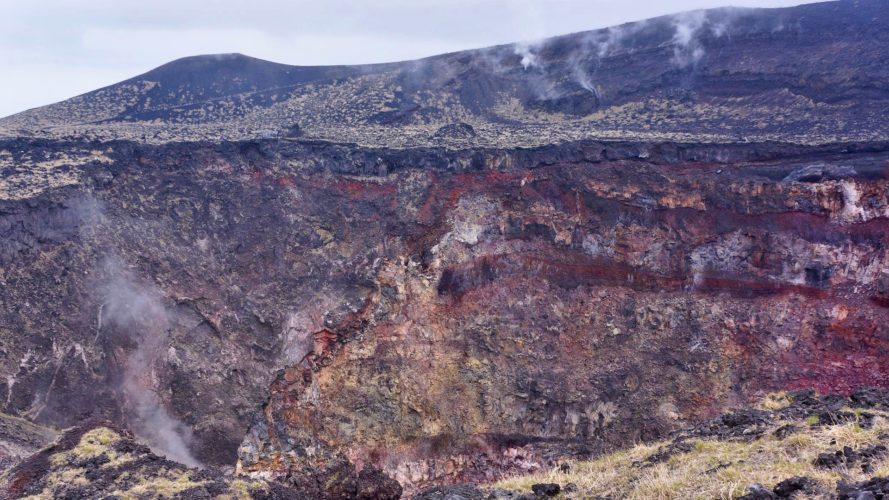In 1933 a 21-year-old Kiyoko Matsumoto fell in love with fellow Jissen Women’s University student, Masako Tomita. Same sex relationships were a taboo in Japanese culture at the time. Matsumoto decided to end her life by jumping into the crater of active volcano, Mount Mihara on the Japanese fishing island of Izu Ōshima.
Volcano suicide copycats
Kiyoko Matsumoto’s suicide soon gained a lot of media attention in Japan. She became a posthumous celebrity. Tokyo Bay Steamship Company launched a daily steamship connection to the island becoming a morbid tourism destination. Local community of poor fishermen switched their focus to tourism, and offered donkey rides for tourists to an observation point overlooking the crater.
The media craze had another disturbing effect: copycat suicides. People started to travel to Mount Mihara to end their lives by jumping off steep crater cliffs. In year 1933 alone, more than 900 people reportedly killed themselves there. Tourists traveled to the infamous volcano just to sit and wait for another inevitable suicide jumper. Media reports claim that over 2000 people commited suicide in Mount Mihara in 1930s.
Eventually authorities fenced off the volcano’s crater, and guard patrols stopped potential jumpers. The volcano jumper trend stopped, but suicide in Japan is an ongoing serious social issue.
Image credit: Mount Mihara volcano in Japan (photo by Kentaro Ohno / CC BY-SA 2.0)



Permalink
My japeye feels like lava is coming out of it when I pee
Permalink
thanks randy mcallister that was very intuitive!